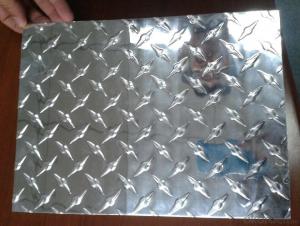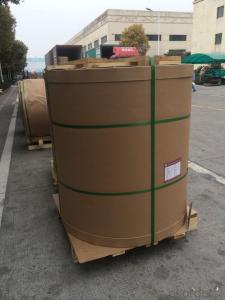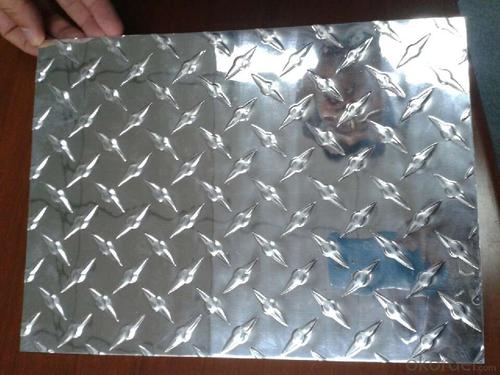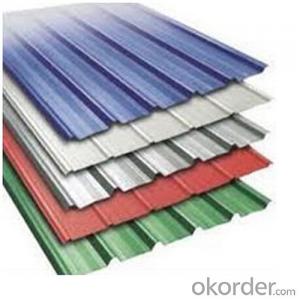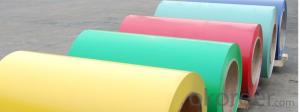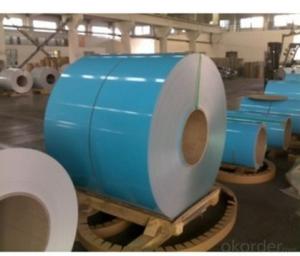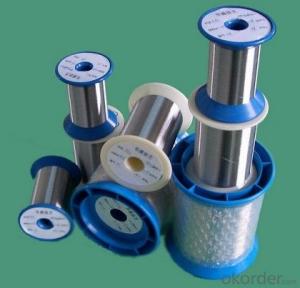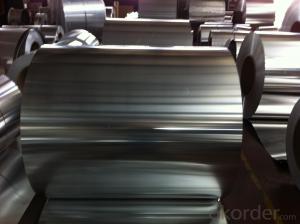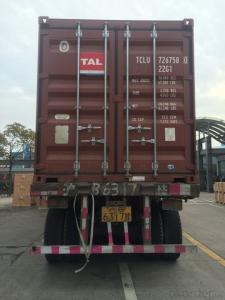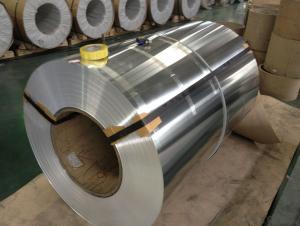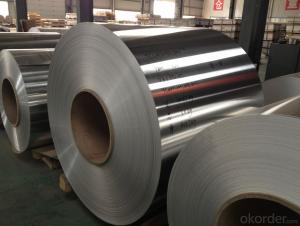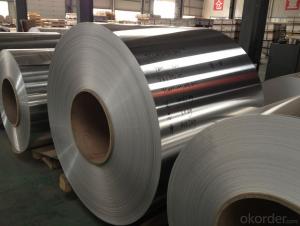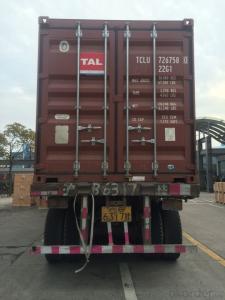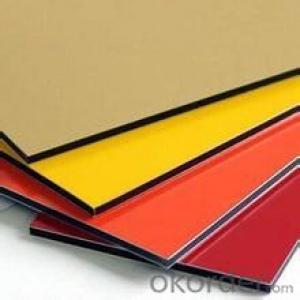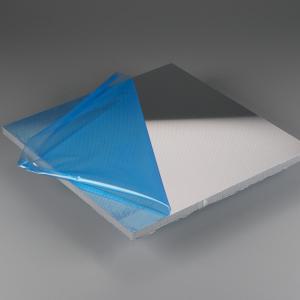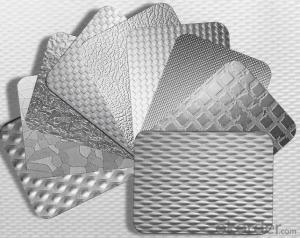Aluminum Sheets Vermont - Aluminium Cold Sheet in Warehouse with Many Stocks Now
- Loading Port:
- Qingdao
- Payment Terms:
- TT OR LC
- Min Order Qty:
- 1 m.t
- Supply Capability:
- 2000 m.t/month
OKorder Service Pledge
OKorder Financial Service
You Might Also Like
Specification
1.Structure of Product Description
aluminum sheet and hot drawn aluminium plate is widely used in the field of decoration and industrial field, etc.
There are many different grades, such as: 3000 series, 5000 series, 6000series,7000 series, 8000 series,etc. The detailed alloy number and temper are as follows: 1010, 1050,1060,1100, 2024, 3003, 3005, 3105, etc.
The temper is include H14, H22, H24, H44,H114,etc.
2. Main features of the product
a.Competitive price
c. Shortest service.
3. Image.
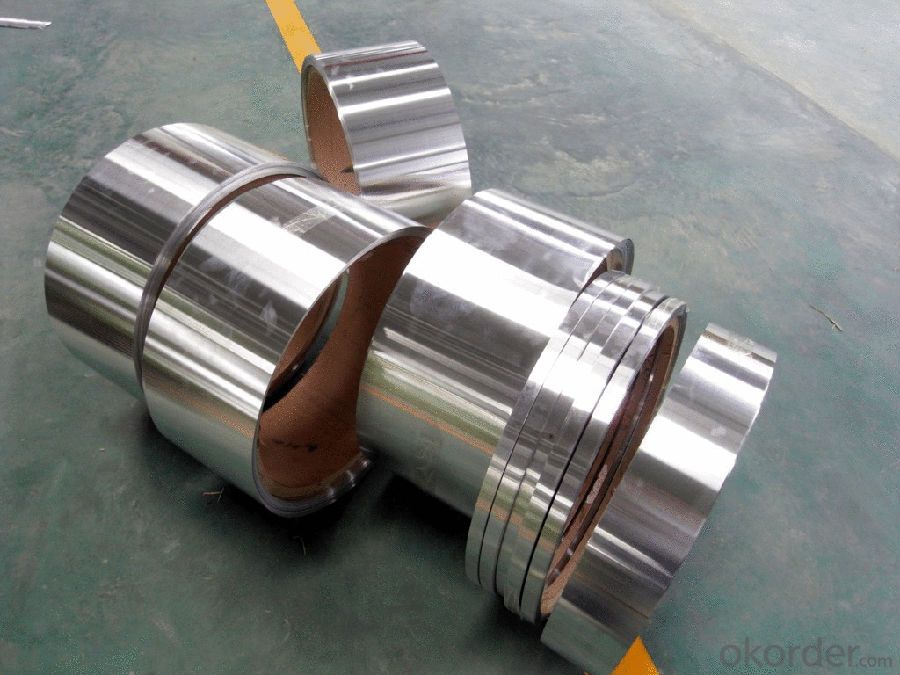
4. Product detailed sizes:
1000mm*2000mm,1220*2440mm,1500*3000mm,1219mm*2438mm,etc.
5. FAQ:
What is the quality standard?
---Usually our standard is GB3880-2006 or others.
What is the width range level?
---It is from 500mm to 6000mm, etc.
What is the MOQ for your products yet?
---Normally it is about 9 tons/each size.
How many tons did you export in one year
Japan, UAE,Singapore,Fiji,Indonesia,Canada, Vietnam,Turkey,etc.
---Normally they are aluminum sheet,small-5-bar aluminium checkered sheet, big-5-bar checkered aluminium plate, mirror finish aluminium sheet, aluminum casting coil, etc.
- Q: Normally, when I install a 30-amp dryer receptacle, the wire is #10 copper and I double over the end with lineman's pliers prior to landing it in the lug just to be extra tight. Today I replaced a dryer outlet wired with #8 aluminum SE. The quandaray I have is that the lugs seem made for #6 and the #8 just sort of flattens and divides under the screw. Is this safe? The doubling over move makes the wire way too thick for the lugs to close. I've been doing electric for many years and have never run into this. Should I go back and re-run the circuit (only about 30 feet) in #10 copper? What is the actual draw of a typical electric dryer on high heat, anyway? Thanks.
- Make sure all work is done to code, we had a house with aluminum wiring, it gets hot when a larger load is applied. When selling, the couple who bought it had an inspector come and he said we had to do all this work or they could not get a mortgage. Whatever you do, make sure it is fully up to code, or you will have alot of trouble selling your home one day.
- Q: How much is the price of the 6061 aluminum plate?
- Therefore, according to your specifications, quantity and use in what place (that is, quality requirements) in order to quote.Or give you a reference priceMore than 8MM thickness of the domestic low-end (that is, the surface black, flatness is not how kind of) price of 20 yuan /KG or soMade in China at the end of the price of 25-30 yuan /KG, domestic high-end 30 yuan /KG or more.Imports are usually 40-80/KGThe thickness below 8MM is quoted according to the actual thickness
- Q: How is the thickness of an aluminum sheet measured?
- Various methods can be employed to measure the thickness of an aluminum sheet. One commonly used technique involves the utilization of precision measuring tools like a micrometer or caliper. By placing the micrometer on one end of the sheet and gradually closing it until it reaches the other end, an accurate measurement of the thickness can be obtained. This particular method is suitable for thin aluminum sheets. For thicker sheets, a thickness gauge can be utilized. This gauge consists of a compact handheld device equipped with a probe that is pressed against the surface of the sheet. The gauge then displays the thickness reading on a screen. This approach proves especially advantageous when measuring thicker sheets as a micrometer or caliper may not be feasible. An alternative means of measuring the thickness of an aluminum sheet involves the use of an ultrasonic thickness gauge. This tool emits ultrasonic waves from a transducer, which are subsequently reflected back from the surface of the sheet. By calculating the time taken for the waves to travel and return, the gauge can determine the thickness of the sheet with great accuracy. This method is particularly effective for measuring the thickness of large or irregularly shaped aluminum sheets. To summarize, the thickness of an aluminum sheet can be determined using a variety of tools such as a micrometer, caliper, thickness gauge, or ultrasonic thickness gauge, depending on the thickness and size of the sheet.
- Q: The diameter of a hole drilled through aluminum at 22°C is 7.50 mm. Find the diameter and the area of the hole at 89°C.
- If i was once you, i might depart a small 1cm gap on the high and cover it with mesh - these round ones don't appear to allow a lot air flow in any respect in my viv and i have three... I have a tendency to simply leave the glass open a bit of at both aspect. You'll have got to use a great mesh although to stop bugs escaping via it. BTW - i think you will have to make it slightly deeper... 1.5 at least in case you are maintaining reps a good way to grow to 12inch plus.
- Q: How does 1200X1200X15 6061 aluminum, CNC processing, the plane degree can reach the number of my clients to 0.2, but I used to use the MS 1000X1500X70 to the material processing, the flatness is only 1, please experienced friend to help, thank you
- The first rough machining, no precision position of the first place, finishing allowance for heat treatment of unilateral 0.15MM, and then remove the stress of 420 degrees Celsius for 4 hours, with the furnace cooling (very important), doing fine processing, can guarantee within 0.03
- Q: How to press multilayer aluminum sheets (aluminum sheet's thickness: 0.2mm) together and keep them inseperate after pressing?
- resistance welding usually overlays two pieces together and presses them, heating them to melting state through current, you can try multiple sheets.
- Q: Can aluminum sheets be anodized without affecting their dimensions?
- Yes, aluminum sheets can be anodized without significantly affecting their dimensions. Anodizing is an electrochemical process that forms a protective oxide layer on the surface of aluminum, which improves its corrosion resistance and durability. The anodizing process involves immersing the aluminum sheet in an acid bath and passing an electric current through it. This causes the aluminum to oxidize, creating a layer of aluminum oxide on the surface. During the anodizing process, the aluminum oxide layer grows inward into the metal, while also building up on the surface. The growth of the oxide layer is controlled by the duration of the anodizing process, and it can be precisely controlled to achieve the desired thickness. Therefore, the dimensional changes caused by anodizing are minimal and can be easily accounted for in the design phase. However, it is important to note that anodizing can cause a slight increase in the thickness of the aluminum sheet. This is due to the growth of the oxide layer on the surface. Typically, the increase in thickness is around 50% of the overall oxide layer thickness. For example, if the desired oxide layer thickness is 10 micrometers, the overall increase in sheet thickness would be approximately 5 micrometers. In summary, while anodizing aluminum sheets can cause a slight increase in thickness, the dimensional changes are minimal and can be accurately predicted and accounted for in the design phase. Anodizing is a popular and effective method for enhancing the properties of aluminum sheets without significantly affecting their dimensions.
- Q: Are 101 aluminum sheets suitable for automotive body panels?
- Yes, 101 aluminum sheets are suitable for automotive body panels. 101 aluminum is a high-strength alloy that offers good formability and corrosion resistance, making it an excellent choice for automotive applications. It is lightweight, which helps improve fuel efficiency and overall vehicle performance. Additionally, 101 aluminum has good dent resistance, ensuring that the body panels can withstand impacts and maintain their structural integrity. Overall, using 101 aluminum sheets for automotive body panels is a practical and effective choice.
- Q: Is it possible to use aluminum sheets for constructing car bodywork?
- <p>Yes, aluminum sheets can be used for car bodywork. They are known for their lightweight, corrosion resistance, and high strength-to-weight ratio, which makes them an ideal material for automotive applications. Aluminum is also recyclable and can contribute to the fuel efficiency of vehicles. It is commonly used in the manufacturing of car bodies, particularly in high-end and electric vehicles, for its durability and energy efficiency.</p>
- Q: Are 101 aluminum sheets suitable for aerospace tooling?
- No, 101 aluminum sheets are not suitable for aerospace tooling.
Send your message to us
Aluminum Sheets Vermont - Aluminium Cold Sheet in Warehouse with Many Stocks Now
- Loading Port:
- Qingdao
- Payment Terms:
- TT OR LC
- Min Order Qty:
- 1 m.t
- Supply Capability:
- 2000 m.t/month
OKorder Service Pledge
OKorder Financial Service
Similar products
Hot products
Hot Searches
Related keywords
